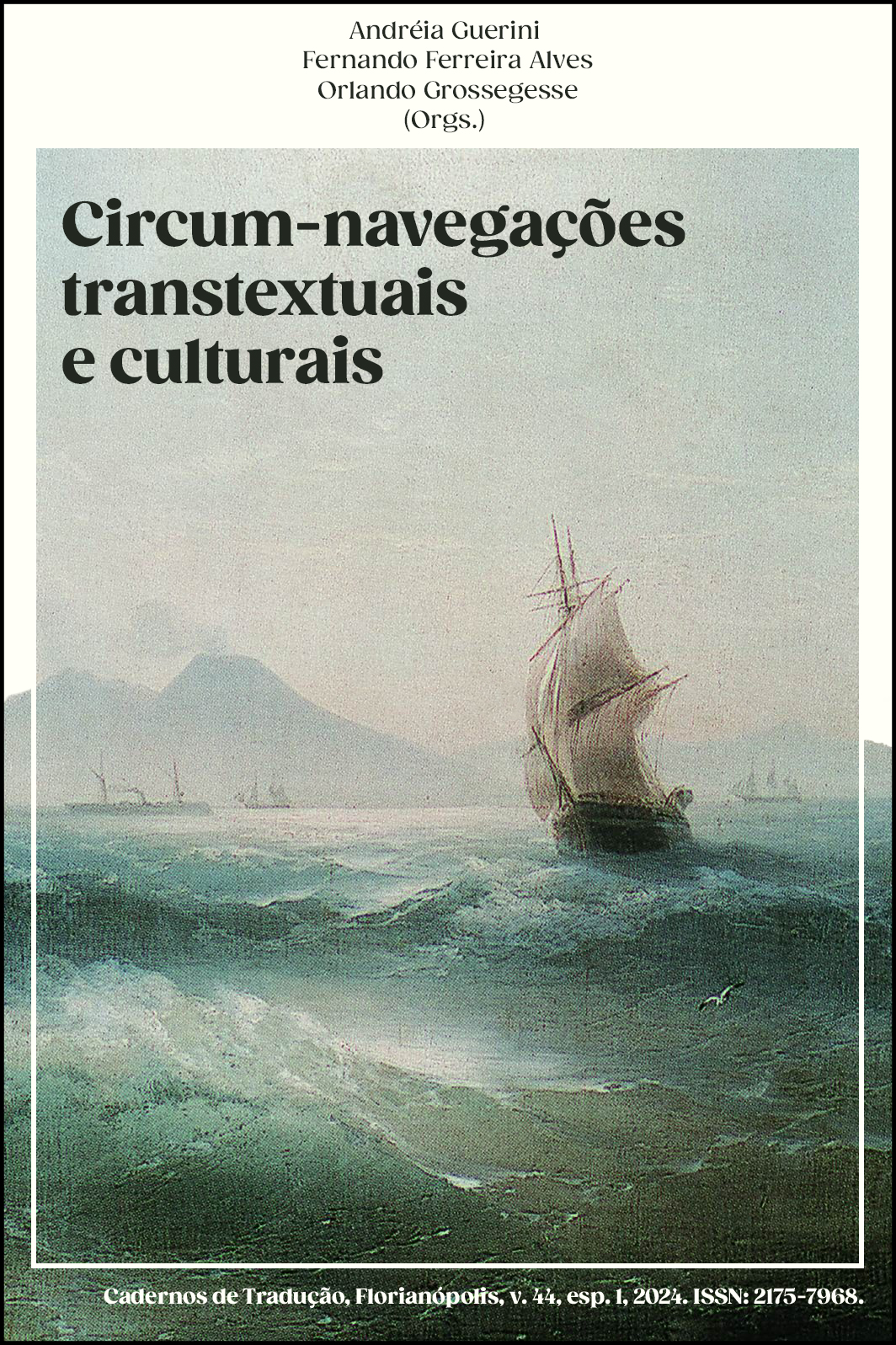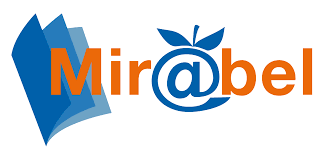Student perceptions of transferable skills development through didactic audio description
DOI:
https://doi.org/10.5007/2175-7968.2024.e94332Palavras-chave:
didactic audio description, transferable skills, Spanish language teaching, didactic audiovisual translation, accessibility awarenessResumo
Didactic audio description (DAD) refers to the use of active audio description (AD) tasks where students generate the AD text themselves. In foreign language teaching, DAD has been used to improve linguistic and oral competences, integrated and intercultural skills, media literacy, mediation, or accessibility awareness, with positive results. This article explores students’ perceptions about active AD to promote transferable skills development through data gathered from a series of two experiments implemented at the University of Manchester between 2018 and 2020. Specifically, it explores (i) whether participants perceived an improvement in their transferable skills, and (ii) in which specific skills sub-sets they did so. Quantitative data show high perceptions of transferable skills development (especially decision making, summarizing, and communicative skills) even when perceptions of the usefulness of AD to foster linguistic skills were low. Qualitative data show that the skills range where participants perceived improvement was broader than predicted, as responses to open-ended questions mentioned skills not foregrounded in closed questions, such as integrated skills, metalinguistic skills, mediation, and accessibility awareness. This suggests that active DAD tasks could be useful in diverse settings to promote a holistic learning experience where students simultaneously develop linguistic and non-linguistic abilities, and where accessibility and inclusion are at the forefront.
Referências
Allen, W. (Director). (2005). Match Point [Film]. DreamWorks SKG; BBC Films. (Spanish DVD edition by Voilà DVD Art Studio, 2006).
Baños, R., & Sokoli, S. (2015). Learning foreign languages with ClipFlair: Using captioning and revoicing activities to increase students’ motivation and engagement. In K. Borthwick, E. Corradini, & A. Dickens (Eds.), 10 Years of the LLAS Elearning Symposium (pp. 203-213). Research-publishing.net. https://doi.org/10.14705/rpnet.2015.000280
Baran-Łucarz, M., & Klimas, A. (2020). Developing 21st century skills in a foreign language classroom: EFL student teachers’ beliefs and self-awareness. Academic Journal of Modern Philology, 10, 23-38. https://doi.org/10.34616/ajmp.2020.10
Basich Peralta, K. E., Guajardo Martínez Sotomayor, A. G., & Lemus, M. Á. (2009). Developing audio description competences as part of a translation education program. Revista Virtual Plurilingua, 5(1), 1-12.
Bausells-Espín, A. (2022). Audio description as a pedagogical tool in the foreign language classroom: An analysis of student perceptions of difficulty, usefulness, and learning progress. Journal of Audiovisual Translation, 5(2), 152–175. https://doi.org/10.47476/jat.v5i2.2022.208
Bausells-Espín, A. (2023). Pronominal verb production in intersemiotic and interlingual translation in students of Spanish as a foreign language: A descriptive study. In A. Ariño-Bizarro, N. López-Cortés, & D. Pascual (Eds.), En torno al lenguaje: Nuevas aportaciones al estudio lingüístico (pp. 269-302). Prensas de la Universidad de Zaragoza.
Bloom, B. S. (1956). Taxonomy of Educational Objectives, Handbook 1: The Cognitive Domain. Longmans.
Calduch, C., & Talaván, N. (2018). Traducción audiovisual y aprendizaje del español como L2: El uso de la audiodescripción. Journal of Spanish Language Teaching, 4(2), 166-180. https://doi.org/10.1080/23247797.2017.1407173
Cenni, I., & Izzo, G. (2016). Audiodescrizione nella classe di italiano L2. Un esperimento didattico. Incontri, 31(2), 45-60. https://doi.org/10.18352/incontri.10169
Chadha, D., & Nichols, G. (2006). Teaching transferable skills to undergraduate engineering students: Recognising the value of embedded and bolt-on approaches. International Journal of Engineering Education, 22(1), 116-122.
Cohen, A. D., & Brooks-Carson, A. (2001). Research on direct versus translated writing: Students’ strategies and their results. The Modern Language Journal, 85(2), 169-188.
Cohen, L., Manion, L., & Morrison, K. (2007). Research methods in education. Routledge.
Council of Europe. (2001). Common European framework of reference for languages: Learning, teaching, assessment. Language Policy Unit.
Council of Europe. (2020). Common European Framework of Reference for Languages. Companion Volume. Strassbourg: Council of Europe Publishing.
Eaton, S. E. (2010). Global Trends in Language Learning in the Twenty-first Century. Onate Press. Retrieved from https://files.eric.ed.gov/fulltext/ED510276.pdf
Férez Mora, P. A., & Coyle, Y. (2023). Storytelling in EFL primary education: Defining a sociocritical and participatory model with pre-service teachers. Thinking Skills and Creativity, 49, 1-10.
Fernández-Costales, A. (2021). Audiovisual Translation in Primary Education: Students’ Perceptions of the Didactic Possibilities of Subtitling and Dubbing in Foreign Language Learning. Meta, 66(2), 280-300. https://doi.org/10.7202/1083179ar
Ferreira Alves, S., & Santiago Araújo, V. L. (2016). Formação do audiodescritor: A estética cinematográfica como base para o aprendizado da estética da audiodescrição – Materiais, métodos e produtos. Cadernos de Tradução, 36(3), 34-59. https://doi.org/10.5007/2175-7968.2016v36n3p34
González-Davies, M. (2004). Multiple Voices in the Translation Classroom: Activities, Tasks, and Projects. John Benjamins.
Gonzalez-Vera, P. (2021). Building bridges between audiovisual translation and English for Specific Purposes. Ibérica, 41, 83-102. Retrieved from http://www.aelfe.org/documents/41_04_IBERICA.pdf
Grundy, A., Sas, C., Vanderhelst, A., & van Rossum, M. (2011). A Journey through Online Language Learning. University College London. Retrieved from www.ucl.ac.uk/lww-cetl-php/OLL/ACTI-Transferableskills.html. Accessed 22 November 2023.
Herrero, C., & Escobar, M. (2018). A pedagogical model for integrating film education and audio description in foreign language acquisition. Translation and Translanguaging in Multilingual Contexts, 4(1), 30-54. https://doi.org/10.1075/ttmc.00003.her
Holsanova, J. (2016). A cognitive approach to audio description. In A. Matamala & P. Orero (Eds.), Researching Audio Description: New Approaches (pp. 49-73). Palgrave Macmillan. https://doi.org/10.1057/978-1-137-56917-2_4
Ibáñez Moreno, A., & Vermeulen, A. (2013). Audio description as a tool to improve lexical and phraseological competence in foreign language learning. In D. Tsagari & G. Floros (Eds.), Translation in Language Teaching and Assessment (pp. 45-61). Cambridge Scholars Publishing.
Ibáñez Moreno, A., & Vermeulen, A. (2014). La audiodescripción como recurso didáctico en el aula de ELE para promover el desarrollo integrado de competencias. In R. Orozco (Ed.), New Directions in Hispanic Linguistics (pp. 263-292). Newcastle upon Tyne: Cambridge Scholars Press.
Ibáñez Moreno, A., & Vermeulen, A. (2015a). Profiling a MALL app for English oral practice: A case study. Journal of Universal Computer Science, 21(10), 1339-1361.
Ibáñez Moreno, A., & Vermeulen, A. (2015b). Using VISP (VIdeos for SPeaking), a mobile app based on audio description, to promote English language learning among Spanish students: A case study. Procedia – Social and Behavioral Sciences, 178, 132-138.
Ibáñez Moreno, A., & Vermeulen, A. (2017a). Audio Description for All: A Literature Review of its Pedagogical Values in Foreign Language Teaching and Learning. Encuentro, 26, 52-68.
Ibáñez Moreno, A., & Vermeulen, A. (2017b). The ARDELE Project: Controlled empirical research on audio description as a didactic tool to improve (meta)linguistic competence in foreign language teaching and learning. In J. Díaz Cintas & K. Nikolić (Eds.), Fast-Forwarding with Audiovisual Translation (pp. 195-211). Multilingual Matters.
Ibáñez Moreno, A., & Vermeulen, A. (2021). A comparative analysis of a mobile app to practice oral skills: In classroom or self-directed use? Journal of Universal Computer Science, 27(5), 472-484. https://doi.org/10.3897/jucs.67032
Ibáñez Moreno, A., & Vermeulen, A. (2023). El uso de los verbos pronominales en español por estudiantes belgas flamencos: análisis a través de la audiodescripción como herramienta didáctica. Revista Signos. Estudios de Lingüística, 56(113).
Jakobson, R. (1959). On linguistic aspects of translation. In L. Venuti (Ed.), The Translation Studies Reader (pp. 113–118).
Kim, S. J., & Hachey, A. C. (2021). Engaging preschoolers with critical literacy through counter-storytelling: A qualitative case study. Early Childhood Education Journal, 49, 633–646. https://doi.org/10.1007/s10643-020-01089-7
Lertola, J. (2019). Audiovisual translation in the foreign language classroom: Applications in the teaching of English and other foreign languages. Research-publishing.net. https://doi.org/10.14705/rpnet.2019.27.9782490057252
Lertola, J., & Talaván, N. (2022). Didactic Audiovisual Translation in Teacher Training. In H. Adams & J. Díaz-Cintas (Eds.), Audiovisual Translation in the Foreign Language Classroom. Special Issue of Revista de Lenguas para Fines Específicos, 28(2), 133–150.
Nägele, C., & Stalder, B. E. (2017). Competence and the need for transferable skills. In M. Mulder (Ed.), Competence-based Vocational and Professional Education, Technical and Vocational Education and Training: Issues, Concerns and Prospects (pp. 739-753). Cham: Springer International Publishing Switzerland. https://doi.org/10.1007/978-3-319-41713-4_34
Navarrete, M. (2018). The Use of Audio Description in Foreign Language Education: A Preliminary Approach. Translation and Translanguaging in Multilingual Contexts, 4(1), 129-150. https://doi.org/10.1075/ttmc.00007.nav
Navarrete, M. (2022). La audiodescripción como actividad mediadora en el aula de lenguas. In A. Sánchez Cuadrado (Ed.), Mediación en el aprendizaje de lenguas. Estrategias y recursos (pp. 41-65). Madrid: Anaya.
Navarrete, M., & Bolaños García-Escribano, A. (2022). TRADILEX: Applying an action-oriented approach (AoA) to audiovisual translation in modern foreign languages. In H. Adams & J. Díaz-Cintas (Eds.), Audiovisual Translation in the Foreign Language Classroom, Special Issue of Revista de Lenguas para Fines Específicos, 28(2), 151-164.
Nunan, D. (2004). Task-Based Language Teaching. Cambridge: Cambridge University Press. https://doi.org/10.1017/CBO9780511667336.002
Ogea Pozo, M. (2022a). Concienciar y enseñar sobre accesibilidad: un experimento didáctico en el aula de traducción audiovisual basado en la audiodescripción. Avanca | Cinema Journal, 13, 20-30. https://doi.org/10.37390/avancacinema.2022.a457
Ogea Pozo, M. (2022b). Into the shoes of visually impaired viewers: a pedagogical experiment to improve audio description and English language skills. International Journal for 21st Century Education, 9(1), 73-87. https://doi.org/10.21071/ij21ce.v9i1.15169
Orero, P. (2016). From DTV4ALL to HBB4ALL: Accessibility in European broadcasting. In A. Matamala & P. Orero (Eds.), Researching Audio Description: New Approaches (pp. 249-267). Palgrave Macmillan. https://doi.org/10.1057/978-1-137-56917-2_13
Plaza-Lara, C., & Gonzalo Llera, C. (2022). La audiodescripción como herramienta didáctica en el aula de lengua extranjera: Un estudio piloto en el marco del proyecto TRADILEX. DIGILEC: Revista Internacional de Lenguas y Culturas, 9, 199-216. https://doi.org/10.17979/digilec.2022.9.0.9282
Rosevsky Saavedra, A., & Opfer, V. D. (2012). Teaching and learning 21st century skills: Lessons from the learning sciences. A Global Cities Education Network report. Asia Society. Retrieved from http://asiasociety.org/files/rand-0512report.pdf
Satriani, I. (2019). Storytelling in teaching literacy: Benefits and challenges. English Review: Journal of English Education, 8(1), 113-120.
Silva, E. (2008). Measuring Skills for the 21st Century. Education Sector Report. Education Sector.
Silva, M. C., & Barros, A. (2021). Para além do visível: Pela adoção de um paradigma emancipatório em audiodescrição. Cadernos de Tradução, 41(2), 66-84. https://doi.org/10.5007/2175-7968.2021.e71544
Sokoli, S. (2006). Learning via Subtitling (LvS): A tool for the creation of foreign language learning activities based on film subtitling. In M. Carroll & H. Gerzymisch-Arbogast (Eds.), Audiovisual Translation Scenarios: Proceedings of the Marie Curie Euroconferences Mu-Tra 2006 (pp. 1-8).
Talaván, N. (2020). The didactic value of AVT in foreign language education. In Ł. Bogucki & M. Deckert (Eds.), The Palgrave Handbook of Audiovisual Translation and Media Accessibility (pp. 567-592). Palgrave Macmillan. https://doi.org/10.1007/978-3-030-42105-2_28
Talaván, N., & Lertola, J. (2016). Active audiodescription to promote speaking skills in online environments. Sintagma, 28, 59-74. https://doi.org/10.21001/sintagma.2016.28.04
Talaván, N., Lertola, J., & Ibáñez, A. (2022). Audio description and subtitling for the deaf and hard of hearing: Media accessibility in foreign language learning. Translation and Translanguaging in Multilingual Contexts, 8(1), 1-29. https://doi.org/10.1075/ttmc.00082.tal
Vermeulen, A., & Ibáñez Moreno, A. (2017). Audio description as a tool to promote intercultural competence. In J. Deconinck, P. Humblé, A. Sepp, & H. Stengers (Eds.), Towards Transcultural Awareness in Translation Pedagogy (pp. 133-156). LIT Verlag.
Walczak, A., & Fryer, L. (2017). Creative description: The impact of audio description style on presence in visually impaired audiences. British Journal of Visual Impairment, 35(1), 6-17. https://doi.org/10.1177/0264619616661603
Zhao, Y. (2019). Negative transfer of mother tongue in English. Creative Education, 10(5), 940–946. https://doi.org/10.4236/ce.2019.105070
Downloads
Publicado
Como Citar
Edição
Seção
Licença
Copyright (c) 2024 Cadernos de Tradução

Este trabalho está licenciado sob uma licença Creative Commons Attribution 4.0 International License.
Autores têm autorização para assumir contratos adicionais separadamente, para distribuição não exclusiva da versão do trabalho publicada nesta revista (ex.: publicar em repositório institucional ou como capítulo de livro, com reconhecimento de autoria e publicação inicial nesta revista).





















































